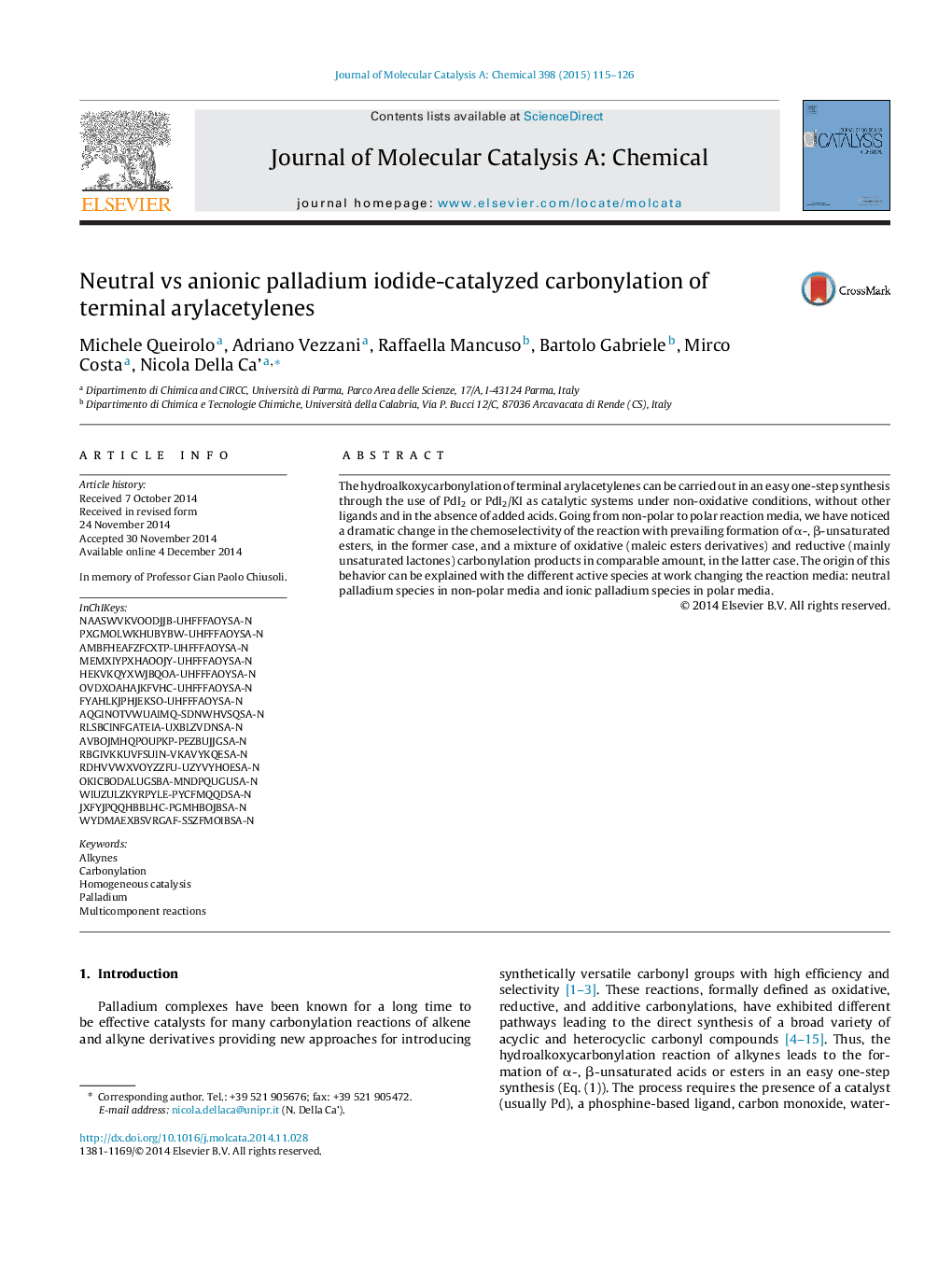| Article ID | Journal | Published Year | Pages | File Type |
|---|---|---|---|---|
| 65205 | Journal of Molecular Catalysis A: Chemical | 2015 | 12 Pages |
•The PdI2-catalyzed hydrobutoxycarbonylation of arylacetylenes has been studied.•A dramatic change in the selectivity of the reaction has been observed going from apolar to polar solvents.•The addition of NBu4I to the toluene/butanol mixture has a dramatic effect on the chemoselectivity of the reaction.•Neutral and anionic palladium species are likely involved in this carbonylation process.
The hydroalkoxycarbonylation of terminal arylacetylenes can be carried out in an easy one-step synthesis through the use of PdI2 or PdI2/KI as catalytic systems under non-oxidative conditions, without other ligands and in the absence of added acids. Going from non-polar to polar reaction media, we have noticed a dramatic change in the chemoselectivity of the reaction with prevailing formation of α-, β-unsaturated esters, in the former case, and a mixture of oxidative (maleic esters derivatives) and reductive (mainly unsaturated lactones) carbonylation products in comparable amount, in the latter case. The origin of this behavior can be explained with the different active species at work changing the reaction media: neutral palladium species in non-polar media and ionic palladium species in polar media.
Graphical abstractFigure optionsDownload full-size imageDownload high-quality image (150 K)Download as PowerPoint slide
